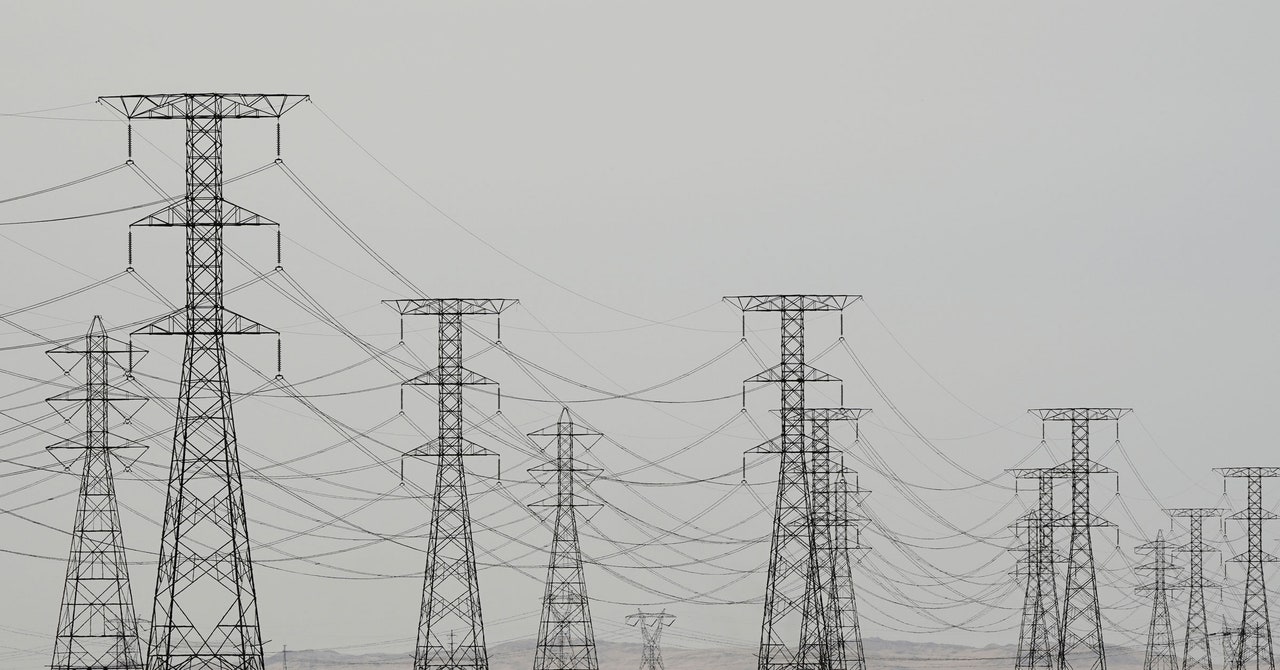
You can almost hear the electrical grid creaking and groaning under the weight of the future, as two forces converge to push it—often literally—to its breaking point.
One force is climate change, which can exacerbate disasters that take down parts of the grid, as Hurricane Ida did this summer, knocking New Orleans offline just as a heat wave settled in. Or extreme weather can suddenly spike the demand for energy just when the grid is least able to provide it, like during last winter’s Texas freeze and subsequent power system failure.
The other force, ironically enough, is the massive deployment of renewable power—the best way to fight climate change and avoid these kinds of disasters. But this will demand a fundamental rethinking of how the grid operates. Gas and coal power plants generate continuous power by burning fuel, and how much they burn can be modulated based on the demand for electricity. But the generation of solar and wind energy fluctuates. The sun doesn’t shine at night, and turbines don’t turn without wind.
This can create a mismatch between demand and supply. Imagine there’s a heat wave. You get home from work at 6 pm and your house is sweltering, so you crank up the AC. The problem is that everyone else is doing that too. This is the time of day when people use the most energy, as they return from work and start cooling their houses, cooking, and running clothes washers and dryers.
Yet by 6 pm, the sun is going down, and solar panels aren’t producing much power. And the wind can stop blowing at any time, leaving a deficit between demand and generation. (Utilities’ ability to load giant batteries up with solar power in the morning and store it for when customers need more energy is currently still quite limited.)
This puts tremendous stress on the grid, which has to exist in constant balance. Utilities have sophisticated systems for predicting when demand will go up and down, so on most days this isn’t a problem. They can buy extra power from neighboring utilities if need be. Or, they can strike that balance by burning more fossil fuels—but that, of course, spews more carbon. But if there’s an unexpected spike in demand and a utility doesn’t have the requisite power, it has to restore balance by cutting demand—with blackouts.
As renewable sources take over the energy mix, utilities won’t be able to quickly spin up more supply by burning fossil fuels. So a future grid that runs on an often intermittent supply of energy from renewables will need to be far more flexible to compensate.
University of Southern California environmental engineer Kelly Sanders, who studies how the grid is evolving, is researching a strategy called precooling, in which home users would turn up the AC earlier in the day when the grid is buzzing with clean solar energy. Basically, they’d shift peak demand away from the return-to-home rush. “You can get a lot of electricity customers to use electricity much more when the sun is out, and then decrease that usage when the sun goes down, so better aligning our behavior with the availability of wind and solar,” says Sanders.
The same principle would apply to heating. In some colder areas of the US, demand during the winter spikes at 6 or 7 in the morning, when people are waking up in freezing houses. Here people could start to preheat their homes at 4 am. Sanders envisions that local officials might also tweak the operation of critical infrastructure to coincide with the availability of renewable energy—maybe a region would time the treatment of its drinking water to when there’s a lot of solar power available.


